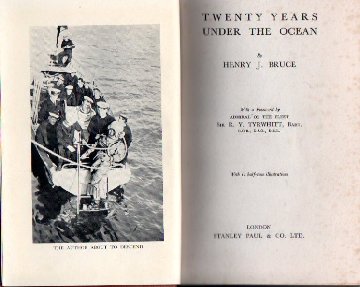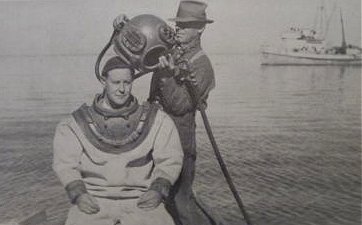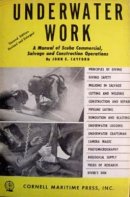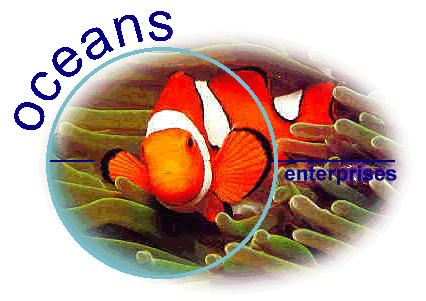| CLASSIC DIVE BOOKS
Commercial Diving, Hard Hat Diving. Please note: The books are listed for interest only, and not offered for sale. |
HOMEPAGE | |
| See also Salvage,
Military
and Navy, and Treasure.
See also Commercial Oil Field Diving See also Military (USA). See also two manuals: Royal Navy Diving Manual, US Navy Diving Manual. See also Hard Hat Collections. See also Commercial Diving Biographies |
See also Authors:
DAVID MASTERS EDWARD ELSBERG ROBERT H. DAVIS DESMOND YOUNG |
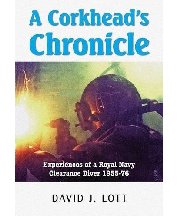 |
A
CORKHEAD'S CHRONICLE.
Experiences of a Royal Navy Clearance Diver, 1955-1976. David J. Lott. |
||||||
 |
ABALONE
DIVING IN TASMANIAN WATERS.
Milfred Knight. Appropriately subtitled The Men, The Boats, The Island Coastline, this is the only book on this lucrative aspect of professional diving and in Australia. Written by one of the 'characters' of the industry, it's sixty-six chapters, or sections, cover not only the experience of abalone diving, but the biology of abalone (briefly), the history of the industry, shipwrecks, weather, the terrain, accidents and underwater physiology - and a marvellous few paragraphs entitled 'Everywhere I go I meet the Village Idiot', which ungraciously refers to encounters with Parks and Wildlife officers. Knight's book is a valuable contribution to diving and industrial archaeology as it serves to document events over the past few decades. Published in 1985. 224 pages, medium format, with mono and colour photographs. |
||||||
| ABOVE
& BELOW
The thrilling adventures of a professional diver and treasure hunter. Tom Shelnick with Ray Christina. Doubleday & Co., Inc. Garden City, New York. 1965. Hardcover, dustjacket, 192 pages, eighteen mono photographs. From the fly: "Tom Shelnick's vivid exploits include pipeline operations in the Philippines, the discovery of buried treasure on the ocean's floor, and many other thrilling and very human adventures. In the foreword, this celebrated young diver gives a valuable check-list for would-be scuba divers; and there are many photographs, in addition to a preface by William Faust of the Pittsburgh Press. Tom Shelnick began his diving career at the age of sixteen and has become internationally famous, working on such jobs as the La Guardia jet wreck, the Andrea Doria salvage, and the Sheppard case. He has worked on diving operations in South America, Mexico, Cuba, and Bermuda; and is retained by the Secret Service, F.B.I., U. S. Navy, and other organizations. Mr. Shelnick has produced shows for the Seaquarium in Miami, Florida; and has appeared on many national television shows." [ps] |
|||||||
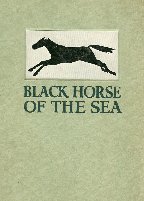 |
BLACK
HORSE OF THE SEA
Robert D. Macmillen Published by Joseph D. McGuire, inc., New York. USA in 1929.
|
||||||
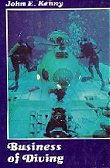 |
BUSINESS
OF DIVING
John E. Kenny. First prnting 1972. Gulf Publishing Company, Houston. Hardcover, dust jacket, 302 pages, larger format. More for the interests of commercial divers at the time, although now of general interest to all divers, including the amateur. Covers history, diving technology, tools and equipment, and an interesting and common-sense section on the future - up to the year 2000. "By the year 2000, dolphins will be widely used for both survey and patrol missions". Chapter on Mixed Gas Diving which is now coming into the amateur sphere of us. Not of great histopric significance even though it was a popular book which retains its readability. [ps] |
||||||
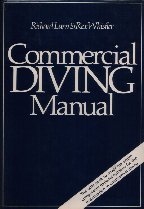 . . |
COMMERCIAL DIVING MANUAL | ||||||
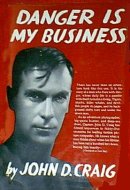
. |
DANGER IS MY BUSINESS
John D. Craig
|
||||||
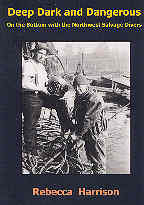 |
DEEP, DARK AND DANGEROUS. On the
Bottom with the Northwest Salvage Divers.
Rebecca Harrison. Self-published, Oregon City, Orgeon, USA, 2006. Softcover, 89 pages, mono photographs, bibliography, endnotes. There is no shortage of biographical material written by old-time divers whose literary ability does not quite match their underwater skills, so it is exciting to read a book that is so well writen, and covers a number of divers over an even greater number of fascinating circumstances. The author has done an excellent job of oral and document research on the the lives of many of the toughest and most accomplished ‘hard-hat' divers of the period 1800s into the 1900s, working in the north-west region of the USA. And one of them is a woman - that has to be ‘first'. John Bevan, himself a well-respected author, modern diver and businessman, states, "(Harrison) has colourfully described many of the gruelling, and sometimes gruesome jobs the divers carried out. Indeed, the book is an excellent representation of the work of the early helmet divers." Bevan continues (in a review in Underwater Contractor International), "The main thing is the quality of the stories! I thoroughly enjoyed reading this action-packed book. Unlike many other books about helmet diving, it is not about an ego, boasting about his personal prowess. It's about remarkable feats of a selection of some of the most capable, helmet divers, as seen through someone else's eyes." I certainly am in no position to disagree with anything Bevan has to say about diving, and make the presumptious conclusion that he is right. It is a great read; anyone with even a modicum of interest in the hardships of early commercial diving will not be disappointed. [ps] See Oceans Enterprises for sales. |
||||||
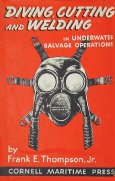 |
DIVING, CUTTING AND WELDING
IN UNDERWATER SALVAGE OPERATIONS.
Frank E. Thompson, Jr. Published by Cornell Maritime Press (1944 First Edition
|
||||||
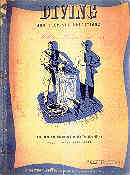 |
DIVING AND DEEP-SEA OPERATIONS
A Vocational Course for Training Civilian Divers. Published and Illustrated by The Training Office in Cooperation with The Bremerton Public Schools, The Washington State Board for Vocational Education. Puget Sound Navy Yard, 1943. The copy I have is an excellent reproduction but there is no indication as to who prepared it. Softcover, A4 size, side-stapled and glued, clear plastic cover over first paage (as shown), 113 pages plus index. Type is that from a a standard typewriter of the time. Illustrations are well drawn ands reproduced on separate paper stock, gloss quality, in blue tint. It's first sentence in Chaper One is, "Do you want to be a deep-sea diver?", so you get the idea that this is a basic training manual. It covers the equipment, the use of equipment and dressing, physics, and general information such as diving on wrecked planes. A very interesting manual, basic but of value to anyopne interested in hard-hat 'standard dress' diving. [ps-repro] |
||||||
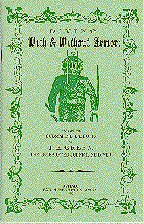 |
DIVING WITH & WITHOUT ARMOUR
Containing the Submarine Exploits of J.B.Green The Celebrated Submarine Diver. Faxon;s Steam Power Press, Buffalo (USA), 1859. Reprinted 2002 by Ray Mathieson at Atlantic Diving Equipment Inc., Bowie, USA. Reprint details: softcover, 84 pages, approx A5 size. It is wonderful that people such as Mathieson have the interest, and funds, to reproduce historical books such as this, otherwise their content would be lost to all who could not afford, or the opportunity to purchase, an original copy. So what makes this book so special that it warrants a reprint; it contains details of old and near forgotten technology, its practices are dubious to the extent that Mathieson provides a warning ‘not to do this at home', and the biographer was a bit of a grump by the sound of it. And yet, this a fascinating record of ‘hard-hat' diving during the mid-19th century. If we cannot learn from the diving practices offered, we can at least me amused and entertained, hopefully with an appreciation for what the diver of the day went through. I don't think Mr Mathieson would mind if I reprint his Words Preliminary, for they give a better description of the book, and the diver .... Diving With and Without Armor is the autobiography of J. B. Green, an early hard-hat diver. Regrettably, through ignorance of diving physics,Green succumbed to the bends, becoming crippled. He told his life's story through this little book, which he sold for twenty-five cents. WARNING: J.B. Green's ideas, notions, andconclusions on how to revive drowned victims and how to conduct diving operations should be regarded as speculation. In some instances, e.g., his description of reviving a girl who had been submerged for "...some eight or ten minutes," he anticipated mouth-to-mouth resuscitation methods in concept-but not in practice. In other cases, lack of understanding of proper diving techniques by him and others had tragic consequences. He describes the deaths of several divers which would not have occurred today, and he passed away believing that he contracted the bends from his air pump, which had a "taste and smell of copper." The modem value of this book lies in the flavor of early 19th century America it conveys-and in the adventure of Green's life. As a working diver, I have a deep appreciation and respect for Green and what he went through. Nevertheless, it would be dangerous to take stock in his suggestions now. Green was also a man of strong opinion. He despised the appearance and behavior of certain "Officers" of the military of "Hayti" he encountered on one of his diving commissions and thought the nation would be much better off governed by freed american blacks. Green labored for months attempting to salvage an American Express Co. safe from the wreck of the steamer Atlantic. Literally minutes from achieving his hope, he was first struck with the bends. The next year, J. B Harrington easily recovered the safe and its treasure, only days before Green returned to the site. In later chapters, Green never misses an opportunity to point out the injustice of this loss. Text and design of this edition are faithful to the original. Green was well versed in English, but his punctuation was eccentric. (As Green might have written:) "The number of commas, in some sentences, is enormous; yet, if these sentences are read, aloud, including the word,'Comma,' a rhythm appears, which, is almost, poetic." These commas and the few misprints and spelling quirks are retained. The boxed text, use of italics (including lack of italics for numerals), continuous page numbering from Roman to Arabic without restarting - are all reproduced here. The principal change from the original is in readability. This edition was producedon a Macintosh computer, and both type and illustrations were prepared electronically. Spacing and form of the original fonts on the cover and title pages were reproduced faithfully. Ray Mathieson, Bowie, Maryland. David Atkins, Arlington, Virginia 1990. |
||||||
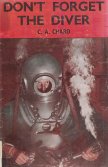 |
DON'T FORGET THE DIVER
|
||||||
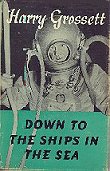
|
DOWN TO THE SHIPS IN THE SEA
Harry Grossett. First published 1953 by Hutchinsons & Co. (Publishers) Ltd, London. Hardcover, dustjacket, 256 pages, many mono photographs: details from top illustrated book. No idea what edition the blue dustjacket may be. The author is no doubt one of the great hard-hat divers of the last century, travelling the work salvaging the mindane and the exotic, from all sunken cargo ships, to gold and othr treasures; he covered both world wars, and was a principle diver in the raising of the German fleet at Scapa Flow. Although much of the book is biographical, he also reveals the principles and practice of standard dress diving, and how it has developed over his half century of working. A superb book, one that you can't put down, and because of its content, of historical value. From the fly: Harry Grossett is probably the most experienced deep-sea diver in the world. He has been going down to the ships in the sea for half a century, and next year he will celebrate both his seventieth birthday and the fiftieth anniversary of his first dive. During his career he has been at the bottom of most of the Seven Seas. He has had to break the ice to go down, and he has walked in the beautiful submarine gardens of the shark- infested tropics. He has travelled all over the world to salvage gold and other cargoes and to render first aid to ships. He has been bitten by a conger eel, trapped in a sunken troopship, and buried under concrete. He has sawn off human limbs under water, and salvaged human bones, and twice he was nearly murdered under water at Hong Kong. During the First World War he was diving from a war-ship off the Dardanelles, and in the Second World War he was senior diver on the laying of the Accra Pipeline. Between the wars he played a leading part in the biggest salvage operation in history - raising the German Fleet at Scapa Flow. He is still diving today. This book is full of adventures, but it is more than a personal adventure story. The author reveals the principles and practice of deep-sea diving, and shows how it has developed during the last fifty years. He looks forward as well as back, and discusses how modern inventions like armoured diving dress and television may affect diving; and in a thoughtful analysis of submarine disasters he suggests how loss of life might have been prevented in the past, and how, by a change in Admiralty policy, it could be prevented in the future. Availability: Extremely rare. A book with dust jacket 500.00 GBP. Info acknowledge: MB [ps-top] |
||||||
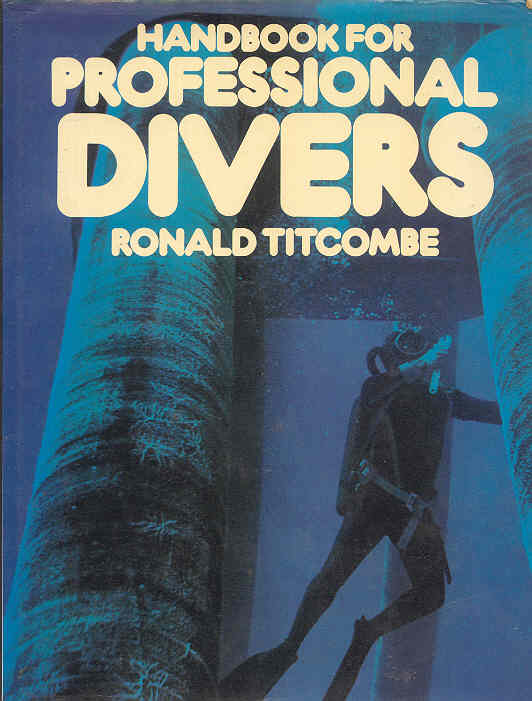 |
HANDBOOK FOR PROFESSIONAL
DIVERS.
Ronald Titcombe. Adlard Coles Limited, London. 1973. Hardcover, dustjacket, 292 pages, mono prints and charts, index. ISBN 0 229 98653 6. This was the major commercial diving book sold by Oceans Enterprises in the eightoes and nineties, and now well out of print. Covers all the subjects - including nuclear radiation. Physics and physiology, accidents, first aid, equipment, maintenance of plant and equipment. |
||||||
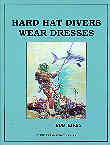 |
HARD HAT DIVERS WEAR DRESSES
Bob Kirby. Olive Press Publications, Los Olivos, California. 2002. No ISBN. Hardcover, laminated boards, A4 size, 360 pages, mono prints, no index. The author is one part of the famous Kirby-Morgan Corporation, now Kirby Morgan Dive Systems, the world's largest manufacturer of modern commercial diving helmets, so I believe. It is an autobiography of a man who was a navy diver, abalone diver, commercial diver, boat bulder, fisherman, construction diver, designer of dive equipment and manufacturer. I am sure it is a fascionating read, but I have not done so as yet. I am put off by the fact that th production of the book itself is not appropriate. This is a book to read and relax with a G & T or a cold beer if so inclined, to take to bed to read, to read on an airflight. But it is difficult to do so because it is of A4 size and simply damn awkward to read comfortably as all books of this size are. The problem is that it need not have been so big as the book is predominantly text. The font is 14 point - huge for a text book, and printed on rather odinary paper so that the photographs are of inferior quality. Better that the book was in a smaller standard format, with photographs interleaved in a sheaf of gloss paper. I would hazard a guess that Olive Press is Bob Kirby and thus the book is self-published. Perhaps this man of grat achievement should have quit when ahead. I have as much chance of designing a decent dive helmet as Olive Press have of designing a quality book. Having said that, (and sorry if it sounds like a gripe but I do get personally annoyed at bad book production), I am sure this is a book that deserves its place in th annuls of dive history as it certainly records the work of a most remarkable man. [ps] |
||||||
| I LIKE DIVING.
Tom Eadie. Published in 1931, by Houghton Mifflin Co, Boston and New York. Hardcover, 244 pages, mono plates. The author was a US Navy diver. Includes the salvage of submarine S-51, for which he was awarded the Navy Cross. Autobiographies such as these provide so much detailed information on early standard dress salvge diving and are a great asset to our maritim knowledge. He worked on th salvage of the submarin S-4 off Princetown, USA, and the submarine S-51. He was a civilian diving instructor, as well as his time in th Navy. Note: I am intrigued by the production of this book. I have two copies. They are identical in every respect of their text and images, same publisher, with no indication that one is a reprint or subsequent edition, with both indicating the 1931 date on the title page, and 'Copyright 1929 by Thomas Eadie' on the reverse of the title page. Yet they are physically different books. One appears older than the other: it is smaller physically at 200mm high, 135 mm wide. The boards are 'very thick', the paper brown, possibly with age, and the corners of the pages, and the boards, neatly rounded. The spine is printed with the title and 'Eadie'. At the foot of the spine I can just make out what appears to be 'FLINT' and beneath that there is another word or words in lower case, the last letter possibly a 'y' - 'Library' perhaps! Above this is the number '627' in 8mm high sna-serif lettering. It thus could well be a special library issue, produced at the same time, or soon after the first 'public edition'. On the title page is a stamp from the 'Flint Public Library Whittier Junior H. 8.' So that answers that question. On back cover endpaper there is the remains of what could have been a library envelope. Interestingly, there is a rubber stamp on the same endpaper, on the left, indicating 'Bound by Edwin Allen Company, JUN 10 1932 CHICAGO'. There is no imbossing on the cover nor spine. Compare this to the second copy I have which is larger, at 210 x 145 mm, with cloth boards embossed with a silver hard hat helmet on the front, , and lettering embosssed on the spine with title, 'Tom Eadie', and Hoyghton Mifflin Co., on the bottom. This I can only assume is the first edition issued to the public. [ps] |
|||||||
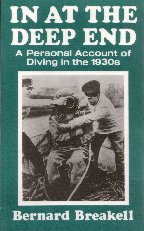 |
IN AT THE DEEP END
Subtitle: A Personal Account of Diving in the 1930’s. Bernard Breaknell Published by: United Writers Publications Cornwall, UK in 1992. Illustrated card covers; 58 printed pages. Dimensions: 21.5 cms tall by 13 cms wide. About two years after Bernard Breaknell came out of his apprenticeship as a mason it was decided that where he worked was going to set up a diving section for the Civil Engineering Department. As a result, he attended a Royal Navy diving course at HMS Drake in Devonport where he trained as an Admiralty trainee and had to reach the standard expected of navy divers. The book contains some 8 chapters: “The Training of an Admiralty Diver”, “After Training – Setting Up Our Own Training Department”, “Incidents and True Tales”, “A Fully Fledged Diver”, “Surveying”, “The Physics and Physiology of Diving”, “Diving Acquaintances”, “The Historical Diving Society”. The author devotes the last chapter to the Historical Diving Society in the UK who encouraged and helped him in producing this fascinating little book. Throughout, the book is illustrated with 10 monochrome photographs and 6 line drawings and maps. This is a personal account of the author’s experiences training and working as a civilian diver after qualifying. [pt] |
||||||
| JOHNNO THE DEEP SEA DIVER
The Life and Adventures of John Johnstone. As told to Peter Dawlish. Published by George G. Harap & Co., London, Sydney etc. 1960. Hardcover, dustjacket, 24 mono photographs. No index. 20 x 14 x 2 cm. The title sounds like a kid's tale - but I dont think it is meant to be. He was one of Australia’s top commercial divers, in standard dress of course, and in solid diving bells, as per his work on the Niagara in New Zealand. From the fly: This is the life story of the famous deep-sea diver, John Johnstone, from his boyhood in Liverpool until now, when he is salvaging ships sunk in the war with Japan. In the many years he has been a diver, Johnno has had enough adventure to satisfy twenty people. He has been trapped under a sunken ship, held prisoner by a groper-the most ferocious fish in the world, salvaged ships with Japanese bombers overhead, and taken a quarter of a million pounds worth of gold bullion from a wreck sunk off the coast of New Zealand, to mention only a few of his exploits. Most of his diving work has been carried out round the coasts of Australia and in the shark-infested waters of the East Indies. There, in his spare moments, he has dived among the beautiful coral gardens, gathering wonderful shells. His work has not been all danger. He has had many delightful hours, finding companions in the brilliantly coloured fish of the tropics. A baby seal adopted him, and used to meet him when he went down! He met all sorts of interesting people, such as crocodile hunters, a boy who lived by catching snakes and getting their venom, pearl divers, and natives who dived naked to gather shells to be made into pearl buttons. Few men, even divers, have had such an adventurous life, and now Peter Dawlish, famous for his stories of the sea, tells Johnno's life story as I Johnno himself described it. [ps] |
|||||||
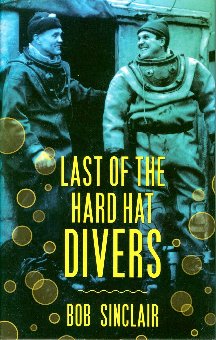 |
LAST OF THE HARD
HAT DIVERS
Bob Sinclair Published by The Book Guild, Brighton in the UK in 2010 Hard back with dust jacket; 245 printed pages. Dimensions: 22 cms tall by 14 cms wide This is a personal account of the authors life in diving. The following details are from the dustjacket: "Bob Sinclair was born in 1931 in Edinburgh. He attended school in Rothesay Academy, Isle of Bute, leaving before his fourteenth birthday. In 1945 he went to work in Henry Robb's shipyard and served his time as a ship's joiner and cabinet maker. Called up to the Royal Navy, he served at his trade until his demob in 1954. He married his childhood sweetheart, Mabel Palmer, in 1955 and they had five daughters: Hazel, Sheila, Fiona, Rosslyn and Pamela. His working life alternated between his trade as a joiner and deep sea diver." This, his first book, tells the story of his childhood during World War II and includes the experience of his childhood family. His love of underwater work becomes self-evident as he conventrates mainly on the aspect of diving, although he has worked as a chargehand joiner, forman joiner and general forman, and actually retired as a staff forman with Sir Robert McAlpine and Sons, the famousbuilding and civil engineering firm. Nevertheless Last of the Hard Hat Divers and its sequal, Hard Hats 2, ignores the joiner work and deals witth diving for the firms of Balfour Beattie, Holloways, Leith Docks Comission, Forth Ports Authority and Mitchell Construction. Bob and his wife Mabel are now living in quiet retirement in Galashiels, in the Scottish Borders" The book is illustrated with 16 monochrome diagrams, drawings and photographs - all located together in the middle of the book. I understand this is the first part of a planned series of 3 books, part 2 already mentioned above. [pt] Note: This book is the 2000th to be loaded to the Classic Dive Books website. |
||||||
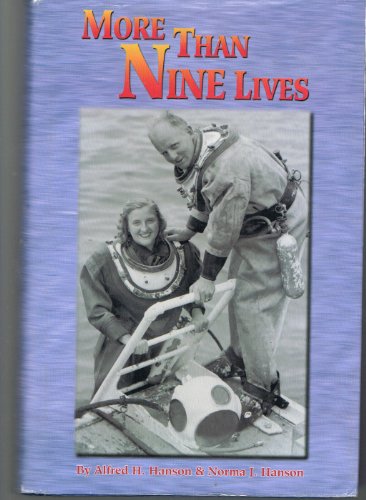 |
MORE THAN NINE LIVES
An autobiography of a life well lived Alfred H Hanson Published by Footprint January 2003, 2003 ISBN 10: 0972699228 / ISBN 13: 9780972699228 Hardcover, 704 pages. No further details. Apparently a limited edition of 500 copies. August 2014, eBay had a copy for sale for $500 US. (Offer of $1,076 US dollars on Abe Books Nov 2015). 00 Reader comment: Easy to read and well worth it at 704 pages. A harder book to find since it was limited to 500 copies (I think), but one of the best I have read. Al and his wife Norma document their lives end to end, most of which was spent diving for a living. They dove together for abalone, salvage, insurance claims, and even underwater movies, mostly in southern California from their home on Catalina Island. There are some harrowing epic journeys in Al's 24 foot boat to perform remote salvage or inspection. The is a great account of an incident with military ordinance recovery. Al did a stunt for the film series "Danger is my Business" where he cut himself out of standard dress while underwater. You can take a look on youtube at the original scene. [sh] |
||||||
 |
NORTH TO DANGER
Virgil Burford. Robert Hale Ltd, London, 1955. "Virgil Burford landed in Alaska penniless, but it was not long afterward that he was paid $100 for ten-minute work. That job was to go below in a diving suit and cut a killer whale out of a salmon trap with wire nippers." This is his autobiography - of the man "they called upon when something went wrong in the chill depths of the the Alaskan shore - a sunken warehouse full of canned salmon, or a dropped ten-ton anchor worth a shilling a pound, or a sevety-ton caterpillar crane sunk in forty feet of water'. Burford, "also gives the exhilaration of the depths, where you are the only human in an undreamed world; and the lighter side - the singing down below, where the brass helmet's resonance beats any shower bath, the banter between men who stake their lives on each other, the carousing andirresponsibility between jobs". An interesting biography. Maroon cloth, gilt text to spine. 190 pp. B/w Frontispiece Map. B/w photos. |
||||||
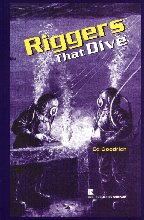 |
RIGGERS THAT DIVE
Ed Goodrich Published by: Best Publishing, USA in 2002. Illustrated hard covers with 104 printed pages. Dimensions: 23.5 cms by 16 cms Illustrated with drawings by the author and “a shipyard photographer”. Very well illustrated with three dimensional line drawing (done by the author) and monochrome photographs, the book is divided into 12 chapters: “Rigger-Divers”, “Shop 72’s Waterfront”, “Distribution Box Boat, and Her Diving Crew”, “Blanking the Main Scoop”, “Emergency Diving Jobs”, “Hull Inspections”, “Underwater Welding and Oxy-Arc Cutting”, “Graving Docks, Caissons and Divers”, “Pier Inspections and Butterflies”, “So You Want to be a Diver”, “Mooring Stake Pile” and “Treating Caisson Disease”. [pt] |
||||||
| SATURATION DIVING AT 650 FEET
R.W. Hamilton, et al. Ocean Systems, Inc., Tonawanda NY, 1966. Spiral Bound Softcover, 200 pages. 4to - over 9¾" - 12" tall. Technical study of a 48 hour dive to 650 feet with complete documentation of physical effects. |
|||||||
 |
SOLID BRASS
Bob Wick Published by: best Publishing Company, USA in 2001. Hard blue cover with illustrated boards; 239 printed pages. Dimensions: 23.5 cms tall by 16 cms wide. Contains hand drawn illustrations by the author. The book is the personal account written in 9 chapters of the authors 40 year life in diving. He worked from the Abalone beds from San Diego to Morro Bay as well as some “challenging work” in the oil industry in zero visibility off Alaska’s Cook Inlet. From the publisher's blurb: Bob Wick's 45 year diving career took him from U.S. Navy SEAL training to abalone diving to oil rig and construction diving. This gritty, no-holds-barred book tells the uncensored version of the commercial 'hard hat' divers from San Diego to Alaska's Cook Inlet. His honest, humorous writing offers the reader a glimpse into his world. A true-life adventure book. [pt],[ps] |
||||||
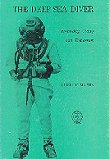 |
THE DEEP-SEA DIVER.
Yesterday, Today and Tomorrow. Robert C. Martin. Published in 1978 by Cornell Maritime Press, Inc. Maryland, USA. Hardcover, dustjacket, 213 pages. A very important book for anyone interested in standard dress (hard-hat) diving, and the subsequent move toward light-weight suits and helmets and mixed-gas use. From the fly: A comprehensive work exploring the world of the deep-sea diver. The primary purpose of this book is to explain the origins, development, cur- rent status, future of the commercial deep-sea diver and the equipment he uses and how it has evolved historically. Furthermore, the text describes in de- tail exactly how the equipment is used by the diver and how different types of diving apparatus are used depending upon the nature of the diver's work. The material is presented in detail using non- technical language. This is the story of how diving apparatus has evolved from simple beginnings into highly-sophis- ticated devices requiring skilled operators and ad- vanced technical knowledge for proper use. Start- ing with the caveman, the deep-sea diver is traced through time to understand how he has studied, invented, and improvised to allow himself to de- scend into the sea and explore its depths. Emphasis is placed on the equipment worn di- rectly by a diver - his helmet, dress, weight belt, and shoes. The initial attempts to provide these devices, their subsequent modifications, and ulti- mate development are described to provide an un- derstanding of the tremendOus difficulties man has overcome to walk beneath the waves. The last four chapters present a photographic and word compilation of diving equipment cover- ing 200 years of development. This information is historically accurate and comprehensive. Contents: A Brief History of the Deep-Sea Diving Outfit - The Physics of Being Underwater - Mark V Diving Apparatus - Diving with a Mark V Outfit - Commercial Heavyweight Deep-Sea Div- ing - Lightweight Diving Apparatus - Scuba - Keeping Warm Underwater - Mixed-Gas Diving Apparatus - Decompression Procedures - Other Diving Systems - A Summary of Equipment and 118 Usage - Heavyweight Helmets - Lightweight Helmets and Masks - Weight Belts - Shoes and Boots. |
||||||
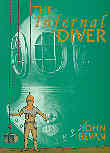 |
THE INFERNAL DIVER
John Bevan. Published by Submex Ltd, London, 1996. ISBN 0 9508242 1 6. Hardcover, dust jacket, A4 size, 314 pages, mono and colour prints, line drawings, index. A wonderful, remarkable book, so much to read. From the fly: Until now it has been erroneously believed that Augustus Siebe was the inventor of the standard diving helmet. He was, in fact, the leading manufacturer. Siebe himself never claimed to be the inventor but with the passage of time and the recognised excellence of his manufacturing standards, Siebe's name superseded that of the true inventors, John and Charles Deane. This book reinstates the Deane brothers as inventors of the diving helmet and traces their lives from humble beginnings in east London, through their sea-going careers, their invention and development of the diving helmet and dress and their subsequent underwater exploits. From their modest beginnings in Whitstable, Kent; they conducted their various underwater activities including treasure-hunting, wreck clearance, salvage, marine civil engineering and military support. The wrecks of the Mary Rose and the Royal George feature prominently in their lives. Their invention was of enormous significance for the future of underwater operations. The diving dress and helmet were enthusiastically embraced by the Royal Engineers and Royal Navy who used them to great advantage in the Crimea. They commissioned John Deane as their resident diving and explosives expert during the campaign. It was in the Crimea, due to his impressive success at blowing up underwater obstacles that he earned the title, "The Infernal Diver". This book charts the successes and failures, the triumphs and tragedies of the Deane brothers' remarkable lives. Their story rewrites an importaItt and hitherto mis-represented part of diving history - the birth of the diving helmet and dress; the origin of today's international diving industry. [ps] |
||||||
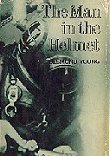 |
THE MAN IN THE HELMET
Desmond Young. I VERI EROI DEGLI ABISSI MARINI Desmond Young, translated by Sebastiano Morin. SEE WEBPAGE FOR AUTHOR This is the Italian version of The Man in the Helmet. TRY ANYTHING TWICE The autobiography of Desmond Young. |
||||||
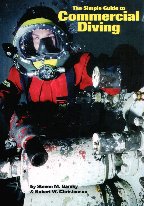 |
THE SIMPLE GUIDE TO COMMERCIAL
Steven M Barsky & Robert W Christiensen Published by: Hammerhead Press, Ventura, California, USA in 2004. Printed card covers; 161 printed pages, mono photographs and drawings, bibliography, appendix of a field neurological exam, index. Dimensions: 25.5 cms tall by 17.5 cms wide. An excellent introductory guide to commecial diving, covering a range of topics that will assist the experienced commercial diver, and provide a basic understanding of what is required for anyone contemplating a career as a commercial diver. Chapters include: an Intro to Commercial Diving, Training to be a Commecial Diver, the Pysiology of Commercial Diving, Modes of Diving, Risks, Equipment, Employment, Working as a Commercial Diver, Rigging for the Commercial Diver, Working as a Diving Supervisor, the Future of Commercial Diving. Each chapter ends with a few pages of ‘true tales from... the North Sea (for example)'. It covers all aspects of the job from initial training through to a supervisory position. It is divided into 12 chapters with each chapter broken down further: Chapter 1 – Introduction to Commercial Diving. Chapter 2 – Training to Be A Commercial Diver. Chapter 3 – The Physiology of Commercial Diving. Chapter 4 – Modes of Diving. Chapter 5 – Risks of Commercial Diving. Chapter 6 – Commercial Diving Equipment. Chapter 7 – Employment as a Tender. Chapter 8 – Working as a Commercial Diver. Chapter 9 – Working With Tools Underwater. Chapter 10 – Rigging for the Commercial Diver. Chapter 11 – Working as a Diving Supervisor. Chapter 12 – The Future of Commercial Diving. There is also an appendix in the back where there are details of both authors and a “Field Neurological Exam”. There are countless monochrome photographs and diagrams throughout the book making the book extremely well illustrated. [pt],[ps]. Note: Currently in print, available (2010). |
||||||
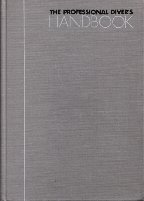 |
THE PROFESSIONAL DIVER'S HANDBOOK
Edited by David Sisman (First edition 1982). Published by Submex Ltd, London, UK in 1982.
|
||||||
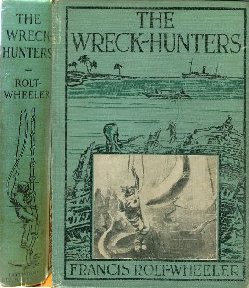
. 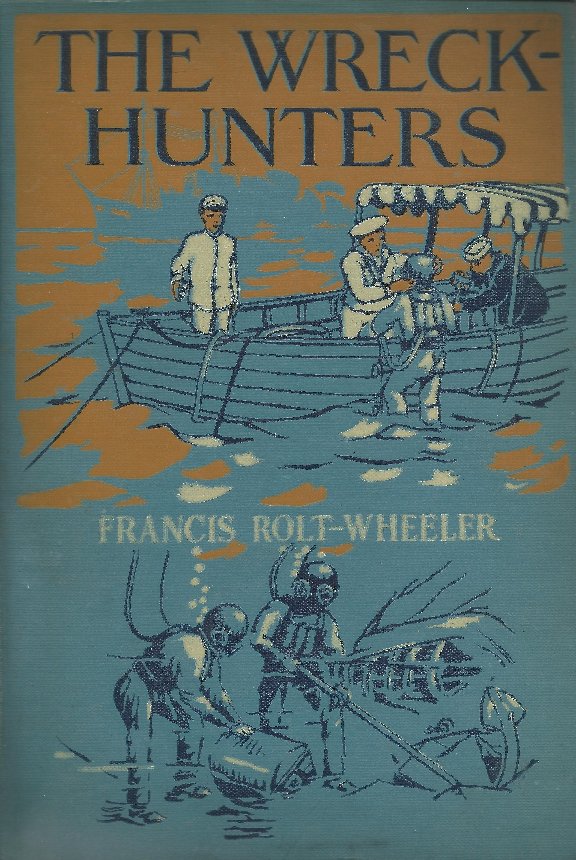 |
THE WRECK-HUNTERS
Francis Rolt-Wheeler Published by Lothrop, Lee & Shepard Co, Boston USA in 1922 Hard illustrated covers, no DJ with 359 printed pages. Dimensions: 20.5 cms tall by 14 cms wide .
|
||||||
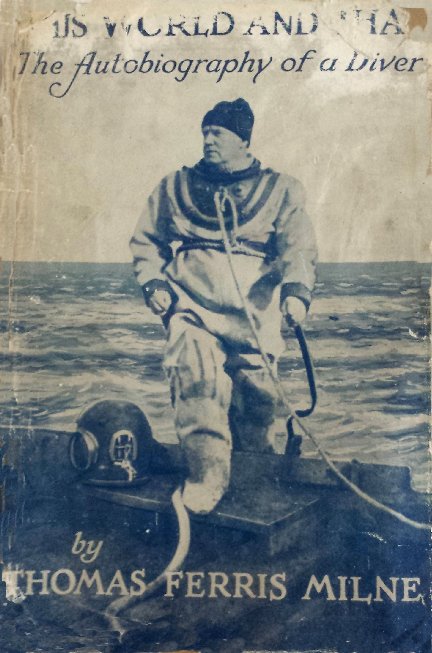
.  |
THIS WORLD AND THAT
|
||||||
TWENTY YEARS UNDER THE OCEAN
|
|||||||
 |
UNDERSEAS LOG.
|
||||||
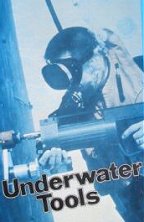 |
UNDERWATER TOOLS
Donald Hackman and Don W. Caudy. Published by Battelle Press, Columbus, Ohio, 1981. Hardcover, dustjacket, gilt lettering on front cover and spine, 152 pages, scale drawings schematics, charts, and mono Ocean Engineering. Diving. Underwater Welding. Underwater Cutting. The book is directed toward design of work systems the total equipment added to a diver or submersible to perform a specific task and return to the surface as opposed to just the diving systems. Information on diving systems is limited to those characteristics and capabilities most pertinent to work system design. Underwater Tools is written for managers, engineers, scientists, divers, and technicians involved in the use, fabrication, and design of underwater work systems. The text emphasizes the practical engineering aspects of these tools. It discusses special characteristics required for underwater work, design considerations, and the many applications of underwater tools. References lead the interested reader to more detailed information |
||||||
UNDERWATER WORK
|
|||||||
 |
UP FOR AIR
Frank Meier (see also authors's page).
|
||||||
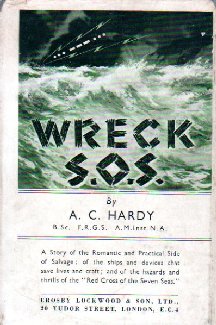 |
WRECK - S.O.S.
A Story of How Ships are Wrecked, How They are Repaired and What Exists to Save Them. A.C.Hardy. Published 1944 by Crosby Lockwood & Son, Ltd. London. Hardcover, 147 pages, mono photographs and line drawings. The Niagara is mentioned. [ps],[ph] |
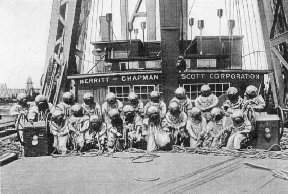

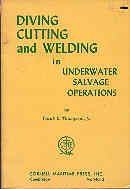
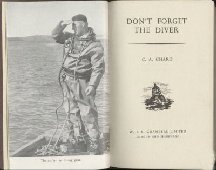
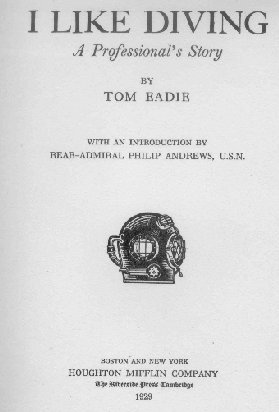
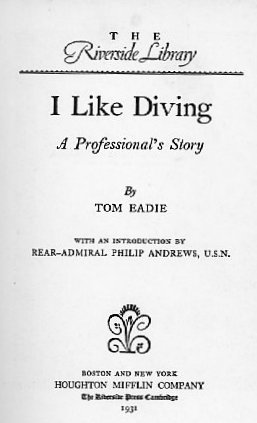
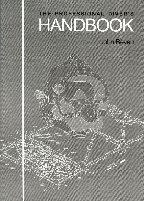
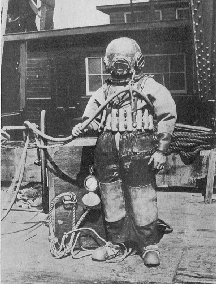
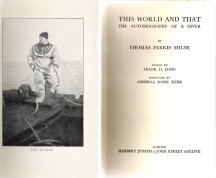
 .
. .
.
